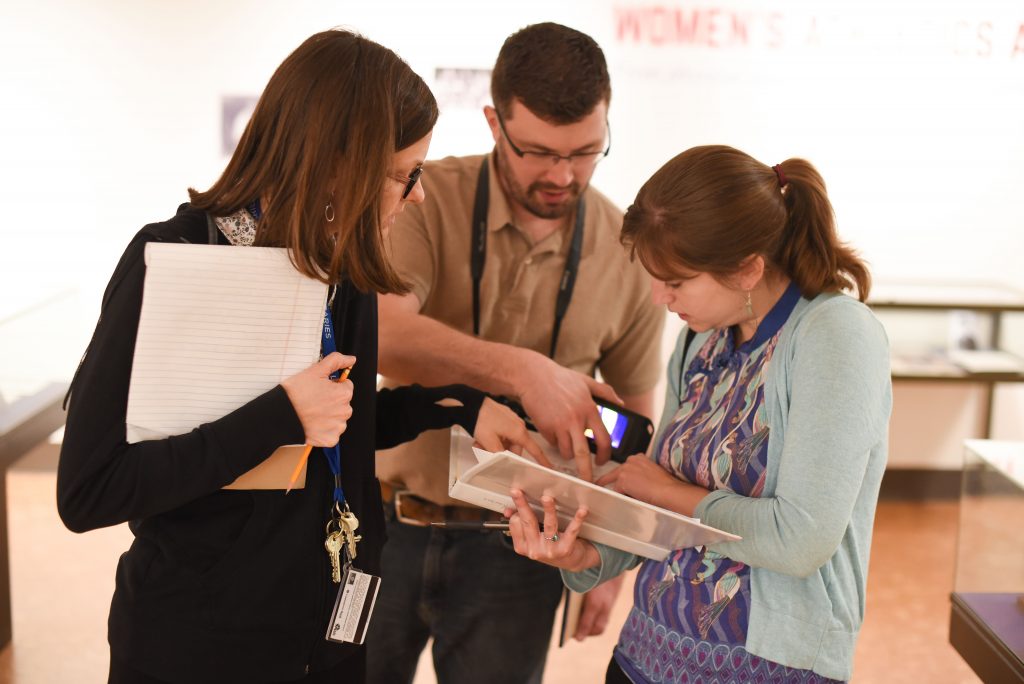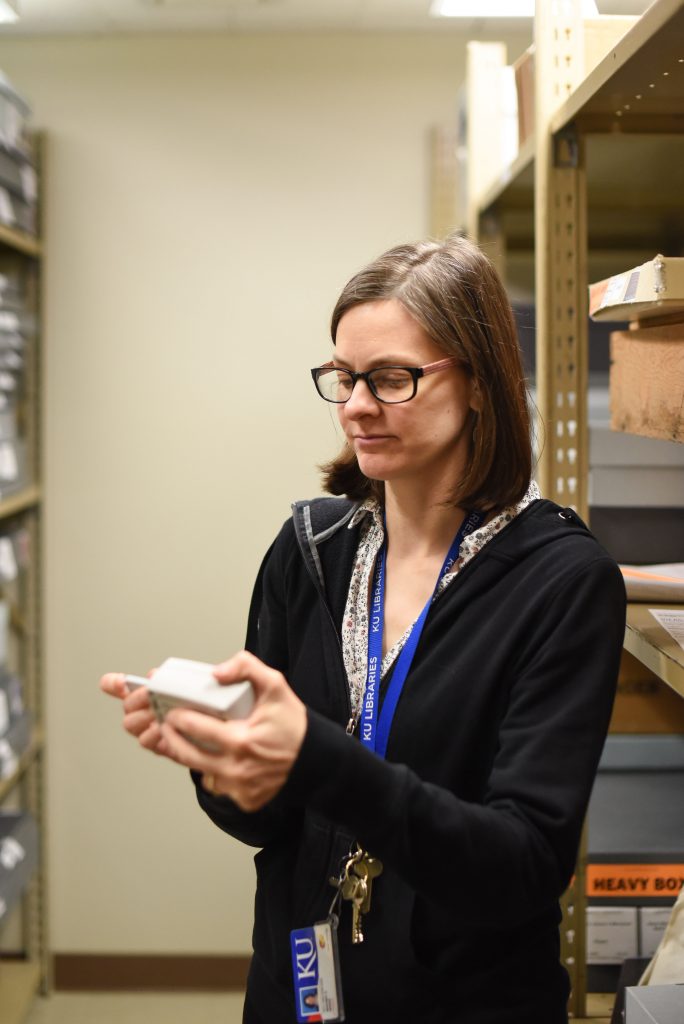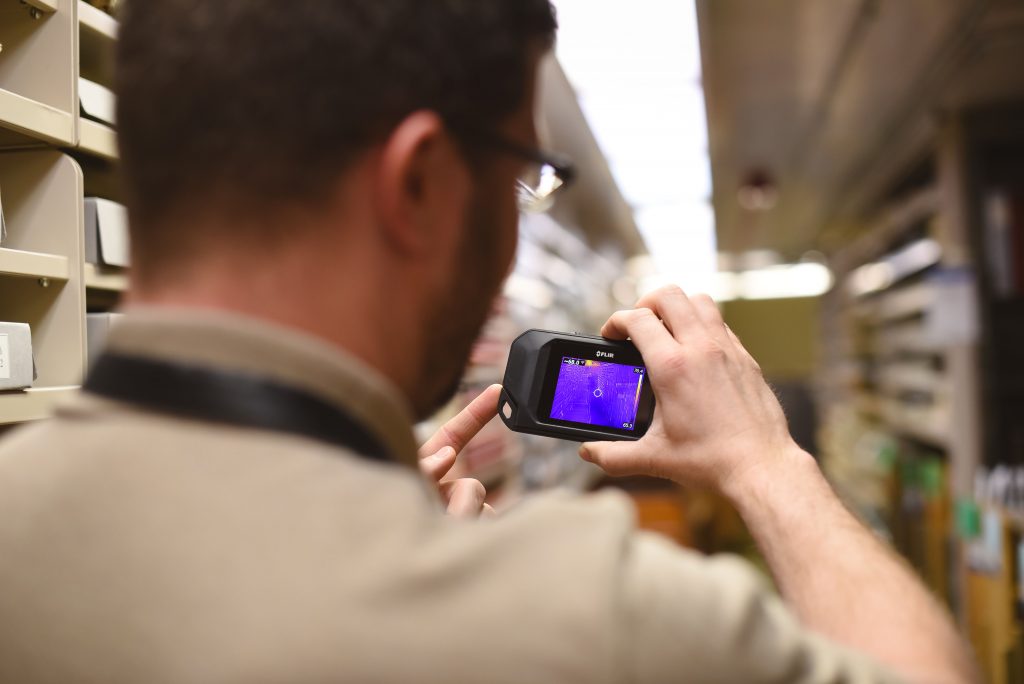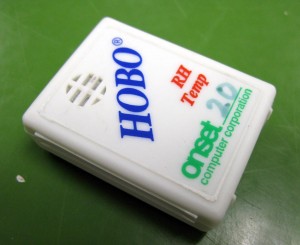Improving the Physical Environment in Spencer Library: The Second Visit from Image Permanence Institute
May 8th, 2018KU Libraries recently hosted Christopher Cameron and Kelly Krish, consultants from Image Permanence Institute (IPI), for their second visit as part of the planning grant we were awarded from the National Endowment for the Humanities, under the Sustaining Cultural Heritage Collections program. The purpose of the grant is to work with our environmental consultants to study the heating, ventilation, and air conditioning (HVAC) system in Spencer Research Library in order to better preserve our collections while also hopefully finding ways to save energy.
On April 24-25, 2018, Christopher Cameron and Kelly Krish met with members of the KU team representing Facilities Services, Campus Operations, KU Libraries, and Facilities Planning and Development. We first met to discuss building and mechanical system updates since their visit in October.
Whitney Baker (left, KU Libraries) confers with Christopher Cameron and
Kelly Krish (Image Permanence Institute). Click image to enlarge.
We then took a tour of the building to retrieve information from all the dataloggers in various collections spaces and the mechanical room. We use Preservation Environment Monitors (PEMs) that were developed by the Image Permanence Institute to record relative humidity and temperature. The data is uploaded into eClimate Notebook, software that was also developed by IPI. Christopher and Kelly can remotely access our data from New York; we have met via conference call periodically to discuss anomalies since their visit last October.
Downloading data from a Preservation Environment Monitor (PEM)
with a thumb drive. Click image to enlarge.
Whitney Baker retrieving data in the
University Archives stacks. Click image to enlarge.
Christopher brought a new infrared (IR) camera to continue analysis of the vents in the stacks. Some seem to be blowing cold air into the space while others produce hot air. It’s a puzzle, and the IR data helps pinpoint how the conditioned air is delivered into the collections spaces.
Christopher Cameron using an infrared camera to locate
cold and hot spots in the stacks. Click image to enlarge.
The consultants and KU team ended the visit by discussing the data, making plans for some controlled studies, and discussing how we might use some designated grant funds to conduct further testing or make small improvements to the system.
We look forward to hosting the IPI consultants again in late fall or early winter, 2018. In the meantime, we will take monthly data readings for twenty-three loggers in the Spencer stacks, vents, and mechanical systems.
Whitney Baker, Head
Conservation Services
Any views, findings, conclusions, or recommendations expressed in this blog post do not necessarily represent those of the National Endowment for the Humanities. “Improving the Physical Environment in Spencer Research Library” has been made possible by a grant from the National Endowment for the Humanities: Sustaining Cultural Heritage Collections.






